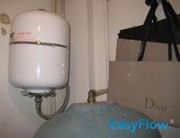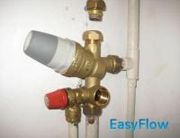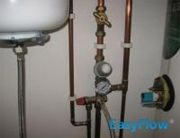- Home
- How to
- How to
- Services
- Services
- Maintenance Plan
- Location
- Guides
- Guides
- No Hot Water – Self help
- Unvented Water Heater
- Unvented Water Heater Faults
- G3 Building Regulations
- Thermal Store Water Heaters
- Thermal Store Faults
- Gledhill ElectraMate
- Gledhill PulsaCoil
- Gledhill Torrent
- Gledhill Stainless Lite
- OSO Unvented Heater
- MegaFlo – Heatrae Sadia
- Santon Premier Plus
- Albion
- Manco Riverstream and Powerstream
- Manco Gladiator & Stirling
- Telford Tempest
- Safety Considerations Unvented Cylinders
- Reduce Your Water Heating Bill
- Range Tribune
- About Us
- About us
- Forums
- Contact

Unvented Water Cylinder Engineers
G3 Qualified
-
Call Now
0161 941 5571
G3 Building Regulations
G3 Building Regulations
In order to ensure safety and health for occupants, the government of the UK enacts strict regulations regarding building design, construction and other areas. This includes hot water, hot water heaters, and other areas related to the supply and flow of water through buildings. It is crucial that these regulations are followed at all times, as they ensure a supply of fresh, wholesome water uncontaminated with bacteria, waste and other materials
The specific regulations relating to the supply of water are known as Part G (Sanitation, Hot Water Safety, and Water Efficiency), and an approved document was published by the government in April 2010. Within the document, the regulations are broken down into six separate sections, which are as follows:
- G1: Cold Water Supply – This section is constrained to the supply of cold water to and throughout a building.
- G2: Water Efficiency – This section is limited to the efficiency of water flow to and throughout a building.
- G3: Hot Water Supply and Systems – This is the most important section for EasyFlow and for consumers investing in hot water heaters, and details the rules that must be followed by hot water heater manufacturers, installers and professional service companies.
- G4: Sanitary Conveniences and Washing Facilities – This section is concerned with the flow of and distribution of water through washing and sanitary systems.
- G5: Bathrooms – This section details the rules laid out for water flow and distribution throughout a bathroom and its associated fixtures and appliances.
- G6: Food Preparation Areas – This section details the rules that apply to water flow and distribution through areas in which food will be prepared.

Expansion Valve

Gladiator Stirling expansion vessel

Gladiator Stirling installing new valve
G3 Building Regulations
Obviously, we’re most concerned with section G3, as it deals specifically with hot water, hot water storage and other related issues. Once, G3 related strictly to unvented water storage, but the new requirements relate to all hot water systems, and there are new provisions included to prevent scalding injuries. Sections two and three of G3 are the most important.
Within section two, you’ll find enhancements to the requirement that hot water systems, expansion vessels and storage tanks are “fit for purpose “. They must be capable of withstanding the stress of temperature and pressure increases through normal use, or that might occur during a failure that can be “reasonably anticipated “.
What does reasonably anticipated mean? Really, it simply means any situation that the designer or installer of the hot water system could foresee occurring through normal usage of the system. For instance, lime scale building up within pipework would be a foreseeable potential issue. However, it is one where the only real option to remedy the system is annual draining and flushing of the system to remove the lime scale build up.
Another example could be the ongoing heating of a thermostat. Thermostats must be made from material capable of holding up in situations in which they remain at high temperatures for long durations, without degrading, breaking down or being damaged. It includes, but is not limited to concepts like normal wear and tear, temperature resistance, pressure resistance, and the like.
The third section requires that any part of a hot water system incorporating a hot water storage vessel be fitted with safety devices that prevent the water from exceeding 100 degrees centigrade. In addition, any water discharged from a heated vessel must be discharged safely and visibly.
Discharge pipework can be located on the roof of the home, or it could exit through an exterior wall. In the case of roof venting, the roofing materials used (shingles, etc.) must be rated to handle very high temperatures, as well as high pressure water flow. If this is not the case, the roof must be resurfaced, or the pipework will need to be rerouted so that it exits through an exterior wall at or near ground level.
Note that in all instances, the discharged water must be contained and protected. This is generally accomplished by the use of metal grids, specially designed outflow shields, and other methods.
Most vented hot water heaters contain at least three safety systems, and the tundish provides visibility for discharged water. This section also quires that all hot water systems are installed and maintained in accordance with manufacturer instructions. This goes hand in hand with the recommendation from manufacturers that hot water heaters be professionally serviced at least once per year.
The actual wording from the document regarding sections two and three can be found below:
(2) A hot water system, including any cistern or other vessel that supplies water to or receives expansion water from a hot water system, shall be designed, constructed and installed so as to resist the effects of temperature and pressure that may occur either in normal use or in the event of such malfunctions as may reasonably be anticipated, and must be adequately supported.
(3) A hot water system that has a hot water storage vessel shall incorporate precautions to:(a) prevent the temperature of the water stored in the vessel at any time exceeding 100c; and (b) ensure that any discharge from safety devices is safely conveyed to where it is visible but will not cause a danger to persons in or about the building.
If you need assistance with any hot water heater repairs, to schedule hot water heater maintenance, or to install a new hot water heater, call EasyFlow at 0800 433 4043

Water inside pressure guage

Installing the replacement PRV

Isolation the water supply
Clarifications and Questions on G3 Building regulations and requirements
While the G3 building regulations documentation provides a great deal of guidance and assistance for homeowners, builders, installers and others who will work with hot water supplies and both vented and unvented hot water heaters, many questions can arise. Below, we’ve included some of the more commonly asked questions, as well as the answers you require.
What controls exist for hot water systems and the hot water supply itself?
Any washbasin or bidet, shower, sink or other fixture must be supplied with “wholesome” water or softened water. All types of hot water systems must properly support cold water cisterns that supply or receive water from hot water cisterns. All new homes and modified homes must have temperature regulation equipment that maintains heated water at no more than 48 degrees centigrade in the bath. This is usually achieved by using a thermostatic mixing value.
Do these regulations apply to smaller hot water heaters?
Can discharge pipework be made from polypropylene?
What materials can be used to design and construct discharge pipework?
Call an EasyFlow Engineer Today
Find out more about EasyFlow Maintenance Plan
At EasyFlow, we understand the requirements set forth in the UK’s G3 building regulations, and how those regulations apply to both new home design and construction, as well as both remodelling existing homes and changing use of properties. Our expert installers and service professionals can ensure a constant supply of hot water, while guaranteeing that all unvented hot water heaters, discharge pipework and other elements are in compliance with UK regulations.
Our maintenance plans are designed to ensure our customers enjoy peace of mind, and constant hot water. We keep your hot water flowing while minimising your costs and eliminating stress. Let our experts identify and correct water heater faults, while you enjoy low monthly payments.
Joanne, Warrington
8 January 2024
Annual Service
Richard, Bolton
14 December 2023
Annual Service
Brian, Wilmslow
15 December 2023
Annual Service
Waheed, Hertfordshire
1 January 1970
No Hot Water
Excellent service as usual.Despite the terrible weather and the lift being out of order
JUDITH, Glossop
28 December 2023
Annual Service
Peter, Liverpool
30 November 2023
Annual Service
Jonathan, Liverpool
22 November 2023
Replacement Valves
Dominic, Chorlton
6 November 2023
Heating Control Replacement
An excellent service as usual and Chris was very helpful and informative.
Derek, Chester
2 October 2023
Annual Service

© 2025 Country & Town Limited. All rights reserved EasyFlow is a Country & Town Limited service







Find out what our clients are saying about the services we provide
Click to view